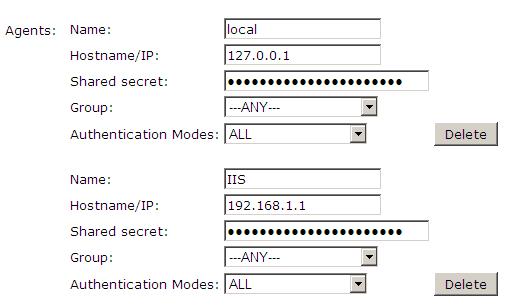Microsoft Windows Small Business Server 2011
Contents
[hide]Introduction
Built on Windows Server 2008 R2, Windows SBS 2011 Standard includes Microsoft Exchange Server 2010 SP1, Microsoft SharePoint Foundation 2010 and Windows Software Update Services.
This configuration document outlines how to integrate Swivel with Microsoft Small Business Server 2011 authentication in addition to the Swivel authentication.
Prerequisites
Microsoft Small Business Server 2011
Swivel 3.x server
Swivel Small Business Software.
Baseline
Swivel 3.9
Architecture
The SBS makes authentication requests against the Swivel server by XML.
Installation
Configure The Swivel Server
Configure a Swivel Agent (For standard XML Authentication)
1. On the Swivel Management Console select Server/Agent
2. Enter a name for the Agent
3. Enter the Exchange IP address
4. Enter the shared secret used above on the SBS
5. Click on Apply to save changes
Configure Single Channel Access
1. On the Swivel Management Console select Server/Single Channel
2. Ensure ‘Allow session request by username’ is set to YES
Configure the SBS 2011
1. Extract the files from the zip folder
2. Copy all the DLLs from the Bin folder to the Bin folder of the SBS application (by default C:\Program Files\Windows Small Business Server\Bin\WebApp\RemoteAccess).
3. Copy pinsafe_image.aspx from the AccountPage folder of the zip to the AccountPage folder of the SBS application.
4. Backup the existing SBS server Logon.aspx. Modify the existing Logon.aspx on the SBS server by locating the relevant sections in the customised Swivel Logon.aspx and copying to the SBS server Logon.aspx. Search for "Swivel Customisation Start". There are three separate sections. Copy each section into the existing Logon.aspx file (the end of the section is marked by "Swivel Customisation End"). It should be clear from the original file where the sections should go.
5. Backup the existing SBS server web.config. Modify the existing web.config on the SBS server by locating the relevant sections in the customised Swivel web.config and copying to the SBS server web.config. There are three sections to change, marked as before. The first one adds the Swivel filter as a HTTP module. The second adds an exclusion to default authorization, so that the TURing image can be displayed without having to authenticate. The third is the list of settings for the PINsafe server. You may find you have to create the <appSettings> section as well as inserting the settings, or you may find that there is a single, empty <appSettings /> entry. In the latter case, replace that with the entire <appSettings> section in the custom file. You will need to change the value="" entries to match the PINsafe settings for your local environment.
6. Finally, restart IIS (this may not be strictly necessary, but it's always best to make sure).
Verifying the Installation
Troubleshooting
Additional Configuration Options
Known Issues and Limitations
Additional Information
For assistance in the Swivel installation and configuration please firstly contact your reseller and then email Swivel Secure support at support@swivelsecure.com

